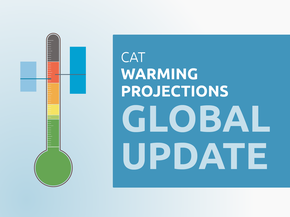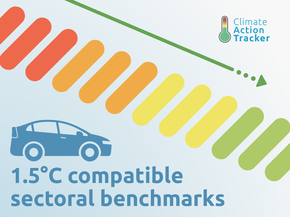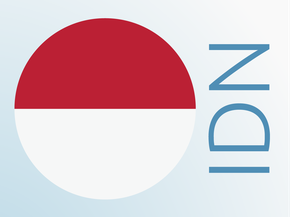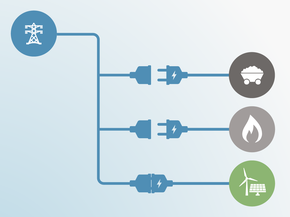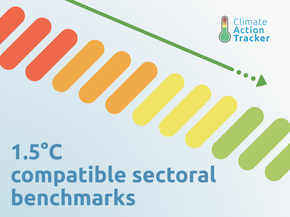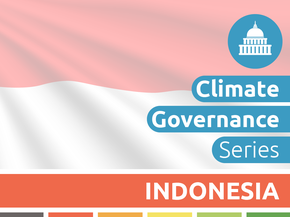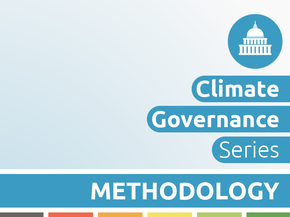Assumptions
Historical data
We use the historical data provided by the First Biennial Update Report for the period 2000-2012, the Third national Communication (Government of Indonesia, 2018) for 2014, and data reported to the UNFCCC for the period before 2000 (note that there is a small discrepancy, of about 50 MtCO2e, between UNFCCC and BUR data for the year 2000; we have made no attempt to harmonise these data sources as the discrepancy is small).
Pledges
To quantify the 2030 NDC and the 2020 pledge, we use the BAU and the distribution of the reductions to sectors from the Third National Communication (Government of Indonesia, 2018). The contribution of the different sectors varies slightly in comparison to the NDC but is similar in size for all sectors.
Current policy projections
We construct the range of current policy projections based on different assumptions of what might happen to the coal-heavy power sector in Indonesia in the future. The scenarios are based on the BAU scenario from APERC, which "assumes current policies and trends continue" (APERC, 2016), and on the RUPTL 2018 – 2027 (Ministry of Energy and Minerals of the Republic of Indonesia, 2018). According to APERC, the share of coal in power generation will increase from 51% in 2013 to 58% in 2020, 59% in 2025 and 60% in 2030. RUPTL leads to 62% in 2020, 54% in 2025 and 59% in 2027. Using emission factors from the IEA’s Current Policy Scenario for non-OECD Asia, multiplied by the time series of coal, oil and gas in TPES according to this BAU, gives an upper bound of emissions in our Current Policy Scenario for the energy sector, representing continued use of coal. Note that the APERC scenario is consistent with increasing installed capacity of coal by 25 GW between 2013 and 2025, so in the same order of magnitude as the RUPTL 2018 – 2027.
Total electricity demand forecast by the RUPTL is slightly higher than that in APERC’s BAU scenario, however the projected electricity generation has substantially decreased in comparison to previous years.
It is to be noted that in our current policy scenario, the target of 23% renewables in TPES is not reached.
We subsequently add process emission projections and non-CO2 emission (from agriculture, energy and waste) projections from the Third National Communication and harmonise the resulting time series historical data from the Third National Communication. The emissions levels are highly sensitive to the method of harmonisation. Thus, we apply two methods:
- Upper end of projections: apply growth rates of the calculated scenarios to the last historical year
- Lower end of projections: adjust all future years by the difference of the calculated scenario and the inventory in the last available year (2014).
Note that our previous estimate expected substantially lower emission levels in 2030. The main differences are:
- Substantial increase in historical emissions from 2012 to 2014
- Different assumption on the development of the energy split in electricity after the last available year in RUPTL (previously continued downward trend in share of coal, now assuming same share as in 2027 for all energy carriers, leading to an upward trend in coal after 2025))
- Apply the energy split of RUPTL electricity generation to the total generation of the same source (previously used APERC for the total generation, given the substantially higher forecasts from earlier RUPTL)
Renewable energy and biofuel targets
A third scenario—representing the achievement of Indonesia’s target shares in primary energy supply by 2025, as per the National Energy Policy (including 23% RE excl. traditional biomass), and the achievement of a 30% blending of biofuels in transport and industry by 2025 (assuming that this reduces the demand for other liquid fuels) (ICCT, 2016)—is constructed using the APERC projections of total supply and demand as a baseline and adapting the relevant shares of renewables and biofuels in the future.
It is assumed here that the share of renewables in TPES will develop linearly from 2025 and 2050 between the targets for those years; it is assumed that the biofuel blending mandate stays at its 2025 level for 2030. The upper bound of this scenario assumes that the biofuel blending mandate overlaps completely with the goal of reaching 23% RE in TPES and that the share of traditional biofuels in TPES would decrease with the same rate as that projected for all biofuels in Indonesia in (WEO, 2013); the lower bound is based on the assumption that these targets are completely additional to one another, and that the share of traditional biofuels in TPES would stay at its current levels (31%, estimated by combining data from (APERC, 2016) and (Republic of Indonesia, 2016c)).
This scenario is shown additionally to the range of current policy scenarios and the pledges based on the NDC’s BAU. Despite the continuing importance of coal in this scenario, it does result in substantially lower emissions than the current policy scenario range and would lead to Indonesia overachieving its conditional 2030 NDC target.
Further analysis
Country-related publications
Stay informed
Subscribe to our newsletter
